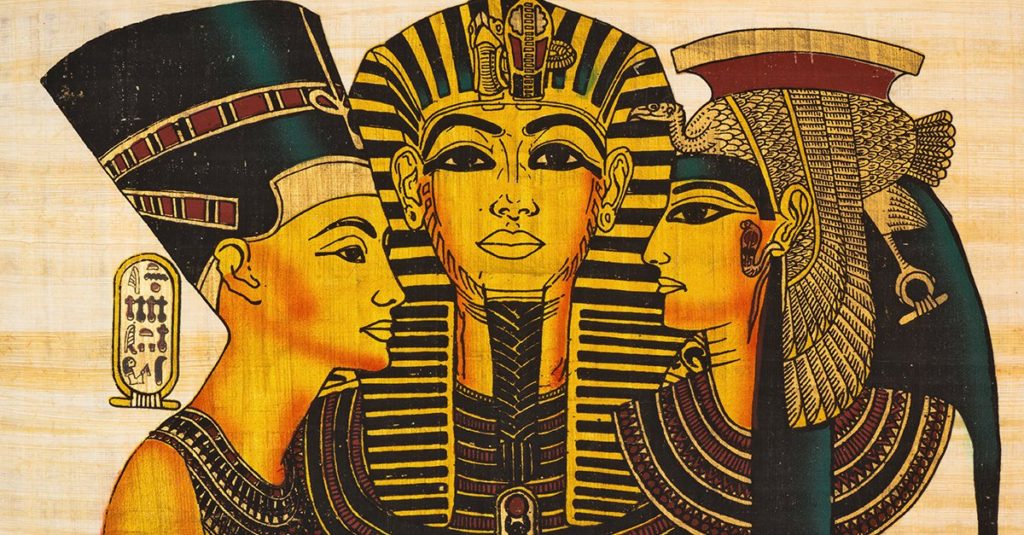Table of Contents
ONLINE/ON SCREEN
| Mark Millmore’s Discovering Ancient Egypt website is crammed with information, interactive activities, videos, and photographs. Topics covered include Hieroglyphs, Pyramids & Temples, Kings & Queens, and Mummification. The site also features a hieroglyphic typewriter, quizzes, and extensive recommended book lists. | |
| At NOVA’s Mysteries of the Nile website, visitors can tour ancient Egypt online, walk around the Sphinx, crawl through the Great Pyramid, and learn what it takes to raise an obelisk (and try it, at least virtually). Included is a selection of lesson plans. | |
| The Life of the Ancient Egyptians is an excellent online text, illustrated with paintings and photos of artifacts and monuments, and covering all aspects of ancient Egyptian daily life, from farming and hunting to hairstyles, dance, and parties. | |
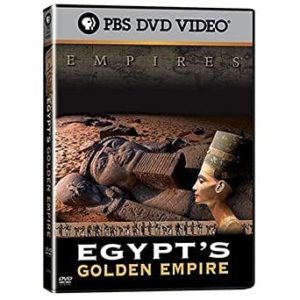 |
PBS’s Egypt’s Golden Empire is a three-part series on the Egyptian New Kingdom (“The Warrior Pharaohs,” “Pharaohs of the Sun,” and “The Last Great Pharaoh”). The website has a series of eight accompanying lesson plans paired with interactive features and video clips. Lesson titles include Hieroglyphs and Communication, Tombs and the Afterlife, The Queens of Ancient Egypt, and The Science and Technology of Ancient Egypt. |
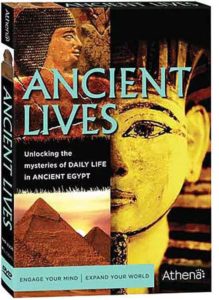 |
Archaeologist John Romer’s Ancient Lives is a superb four-part DVD series on ancient Egypt. Not just ancient lives, these are the lives of real people. Very highly recommended. |
| On the NeoK12 website, Ancient Egypt is a collection of short educational online videos, among them “History of Egypt” (2 parts), “Secrets of the Pyramids” (2 parts), and “Engineering an Empire” (10 parts). | |
 |
Professor Bob Brier’s 48-part History of Ancient Egypt is a thoroughly fascinating lecture series from The Great Courses, covering Egypt from prehistory to Cleopatra (the last Ptolemy), with side trips to discuss obelisks, Egyptian medicine, and mummies. Brier is a catchy and dynamic lecturer; the course is intended for teenagers and adults, but should appeal to younger kids as well. Get the DVD version; you’ll want the visuals. Full price is expensive, but all Great Courses are periodically put on sale. |
ANCIENT EGYPTIAN MYTHS AND LEGENDS
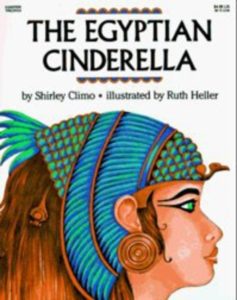
|
Shirley Climo’s The Egyptian Cinderella (HarperCollins, 1992) is the story of the slave girl Rhodopsis whose rose-colored slipper is stolen by a falcon and dropped in the lap of the pharaoh – who takes it as a sign that he should marry the one that the slipper fits. For ages 4-8. |
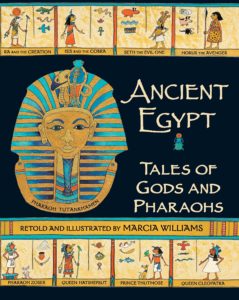
|
By Marcia Williams – one of my all-time favorite author/illustrators – Ancient Egypt: Tales of Gods and Pharaohs (Candlewick, 2011) is a re-telling of nine ancient Egyptian tales, illustrated with wonderful (and cleverly funny) comic-strip-style drawings. For ages 6-9. |
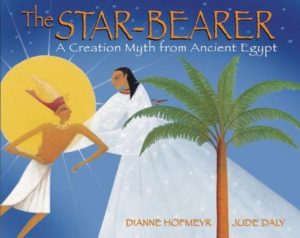
|
Dianne Hofmeyr’s The Star-Bearer (Frances Lincoln Children’s Books, 2012) is a beautifully illustrated creation tale from Egypt, beginning with the birth of the creator, Atum, from a lotus bud. Atum then brings into being Shu, the god of air, and Tefnut, the goddess of rain, whose children – Geb, god of earth, and Nut, goddess of the sky – must be separated so that creation can continue. Geb and Nut are devastated. For ages 6-10. |
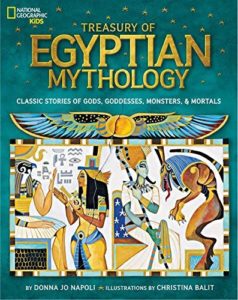 |
Donna Jo Napoli’s Treasury of Egyptian Mythology (National Geographic, 2013) is a gorgeously illustrated collection of myths, introducing Egyptian gods, goddesses, and mythical creatures. For ages 8-12. |
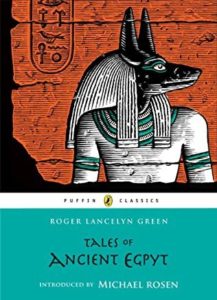
|
Roger Lancelyn Green’s classic Tales of Ancient Egypt (Puffin, 2011) is a collection of 20 traditional stories, beginning with “Ra and His Children,” and continuing through “The Great Queen Hatshepsut,” “The Book of Thoth,” “The Story of the Shipwrecked Sailor,” “The Treasure Thief,” and “The Girl With the Rose-red Slippers.” For ages 8-12. |
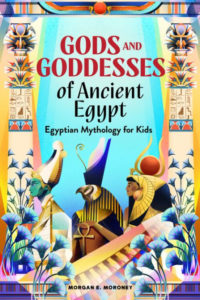 |
By Morgan E. Moroney, Gods and Goddesses of Ancient Egypt (Rockridge Press, 2020) includes a timeline, map, and an introduction to the stories of the major Egyptian gods and goddesses, among them Ra (the Sun God), Osiris (God of the Underworld), Isis (Goddess of Magic, Thrones, and Healing), Seth (God of Deserts, Storms, War, and Chaos), Anubis, (God of Mummification), and Bastet (Goddess of Cats, Joy, and Motherhood). For ages 9-12. |
ANCIENT EGYPTIAN FICTION
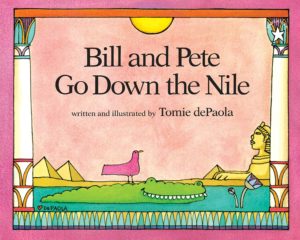
|
In Tomie de Paola’s Bill and Pete Go Down the Nile (Puffin, 1996), Bill, a little green crocodile, and Pete, a bird (and Bill’s toothbrush), head down the Nile with the rest of the crocodiles in Mrs. Ibis’s class, learning Egyptian history and seeing the sights along the way. Humor and adventure for ages 4-8. |
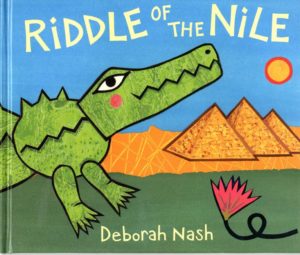
|
In Deborah Nash’s Riddle of the Nile (Frances Lincoln Children’s Books, 2006), illustrated with bright blocky collages, Baby Crocodile plans to become king of the Nile, but first must solve a riddle – which involves a tour of ancient and modern Egypt, with advice given by everything from the Great Sphinx to a frog. Included are instructions for making and playing a Pyramid Fortune Game. For ages 4-8. |
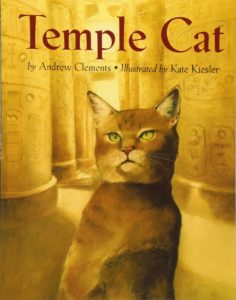
|
By Andrew Clements, Temple Cat (Houghton Mifflin Harcourt, 2001) is the story of an ancient Egyptian temple cat, worshipped as a god by the priests – but who, despite all the pampering, longs for freedom and life as an ordinary cat. Finally he runs away and ends up living in a fisherman’s hut by the sea, loved by the fisherman’s children. For ages 4-8. |
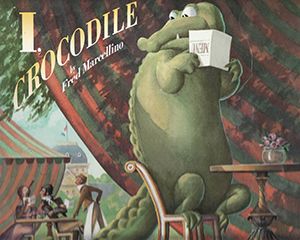
|
In Fred Marcellino’s I, Crocodile (HarperCollins, 2002) – narrated by the crocodile – he’s been shipped from Egypt to France by Napoleon. (“What a cruel and abrupt departure from my mudbank.”) For ages 5-9. |
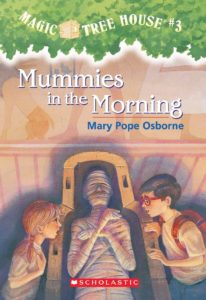
|
In Mary Pope Osborne’s Mummies in the Morning (Random House Books for Young Readers, 1993) – third in the immensely popular Magic Treehouse series – Jack and Annie travel back in time to ancient Egypt. For ages 6-9. |
| Mummies in the Morning is a lesson plan to accompany the book. Kids locate Egypt on the map, convert a short book report into hieroglyphs, make paper, and more. | |
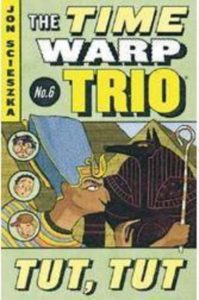
|
In John Scieszka’s Tut, Tut (Puffin, 2004) – one of the zany Time Warp Trio series – Sam, Joe, and Fred, via magical book, are transported to ancient Egypt, where they promptly run afoul of the evil priest Hasmat. For ages 6-10. |
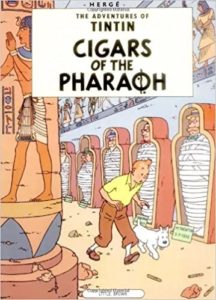
|
In Herge’s Cigars of the Pharaoh (Little, Brown Books for Young Readers, 1976) – one of the popular Tintin series – Tintin and dog Snowy are on a cruise to Egypt where they meet Professor Sophocles Sarcophagus, join his expedition, and discover a pharaoh’s tomb filled with dead Egyptologists and cigars. Soon all are embroiled in exciting international intrigue. For ages 9 and up. |
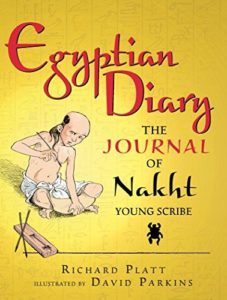
|
Richard Platt’s Egyptian Diary (Candlewick, 2014) is the journal of nine-year-old Nakht, a young scribe who discovers a tomb-robbing plot and meets the pharaoh Hatshepsut. For ages 9-12. |
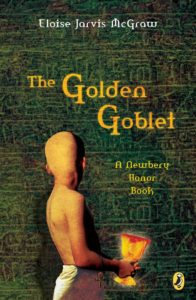
|
Eloise Jarvis McGraw’s Newbery Honor book, The Golden Goblet (Puffin, 1986), is an exciting mystery set in ancient Egypt. After 12-year-old Ranofer’s goldsmith father dies, his abusive half-brother, Gebu, takes over the family workshop and treats Ranofer like a slave. Gebu, it turns out, is also robbing the pharaoh’s tomb. For ages 9 and up. |
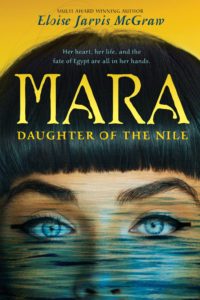
|
The main character of Eloise Jarvis McGraw’s Mara, Daughter of the Nile (Puffin, 1985) is a bright and beautiful young slave girl (with a passion for reading) who becomes embroiled in palace intrigue in the days of the female pharaoh Hatshepsut. There’s some loose play with history here, but it’s a great story anyway. For ages 9 and up. |
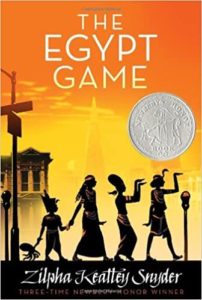
|
Who doesn’t love an imaginary world? In Zilpha Keatley Snyder’s The Egypt Game (Atheneum Books for Young Readers, 2009), April, Melanie, and Melanie’s little brother Marshall invent an elaborate fantasy game in which they re-create ancient Egypt. Soon, however, strange and worrisome things begin to happen. Including murder. For ages 9 and up. |
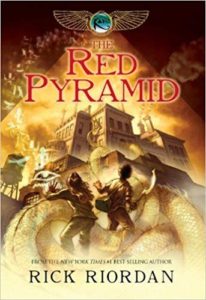
|
In Rick Riordan’s The Red Pyramid (Hyperion Books for Children, 2011) – the first book of the Kane Chronicles series – Carter and Sadie Kane’s Egyptologist father takes them on a private tour of the British Museum where he causes an explosion, reduces the Rosetta Stone to rubble, and wakes the sleeping gods of Egypt, who are definitely not friendly. For ages 9 and up. |
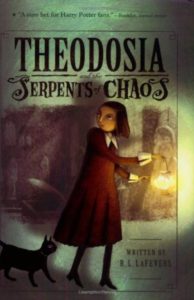
|
Theodosia, main character of R.L. LaFevers’s Theodosia and the Serpents of Chaos (Houghton Mifflin Harcourt, 2008) is a feisty eleven-year-old whose father is curator of London’s Museum of Legends and Antiquities, filled with artifacts sent home by her mother, an archaeologist in Egypt. In this and subsequent books, Theo uses old Egyptian magic to ward off the curses that surround these ancient items – in this volume, an amulet capable of releasing the Serpents of Chaos and destroying the British Empire. The first of a series, with subsequent titles including Theodosia and the Staff of Osiris, Theodosia and the Eyes of Horus, and Theodosia and the Last Pharaoh. Starred reviews. For ages 9 and up. |
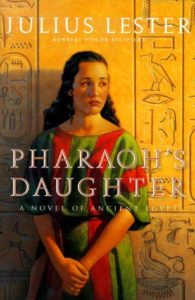
|
Julius Lester’s Pharaoh’s Daughter (Houghton Mifflin Harcourt, 2009) is the story of Moses (Mosis) who appears as a conflicted teenager, torn between two cultures and influenced by very different women, among them his birth sister Almah and Meryetamun, the pharaoh’s daughter, who plucked him out of the bulrushes. A complex and interesting read for ages 12 and up. |
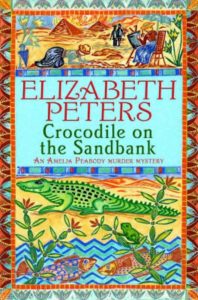
|
Elizabeth Peters’s Crocodile on the Sandbank (Grand Central Publishing, 2013) is the first of an extensive mystery series set in the late 19th century starring feisty Egyptologist Amelia Peabody. (The author knows her stuff; she herself has a doctorate in Egyptology.) Among the subsequent titles are The Curse of the Pharaohs, The Mummy Case, and Lion in the Valley. Fun and exciting reads for teenagers and adults. |
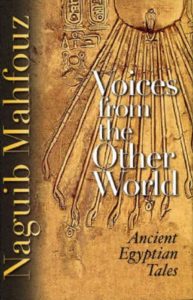
|
By Nobel laureate Naguib Mahfouz, Voices from the Other World: Ancient Egyptian Tales (Anchor Books, 2004) is a collection of five short stories set in ancient Egypt – though the themes (power struggles, morality) are timeless. For teenagers and adults. |
